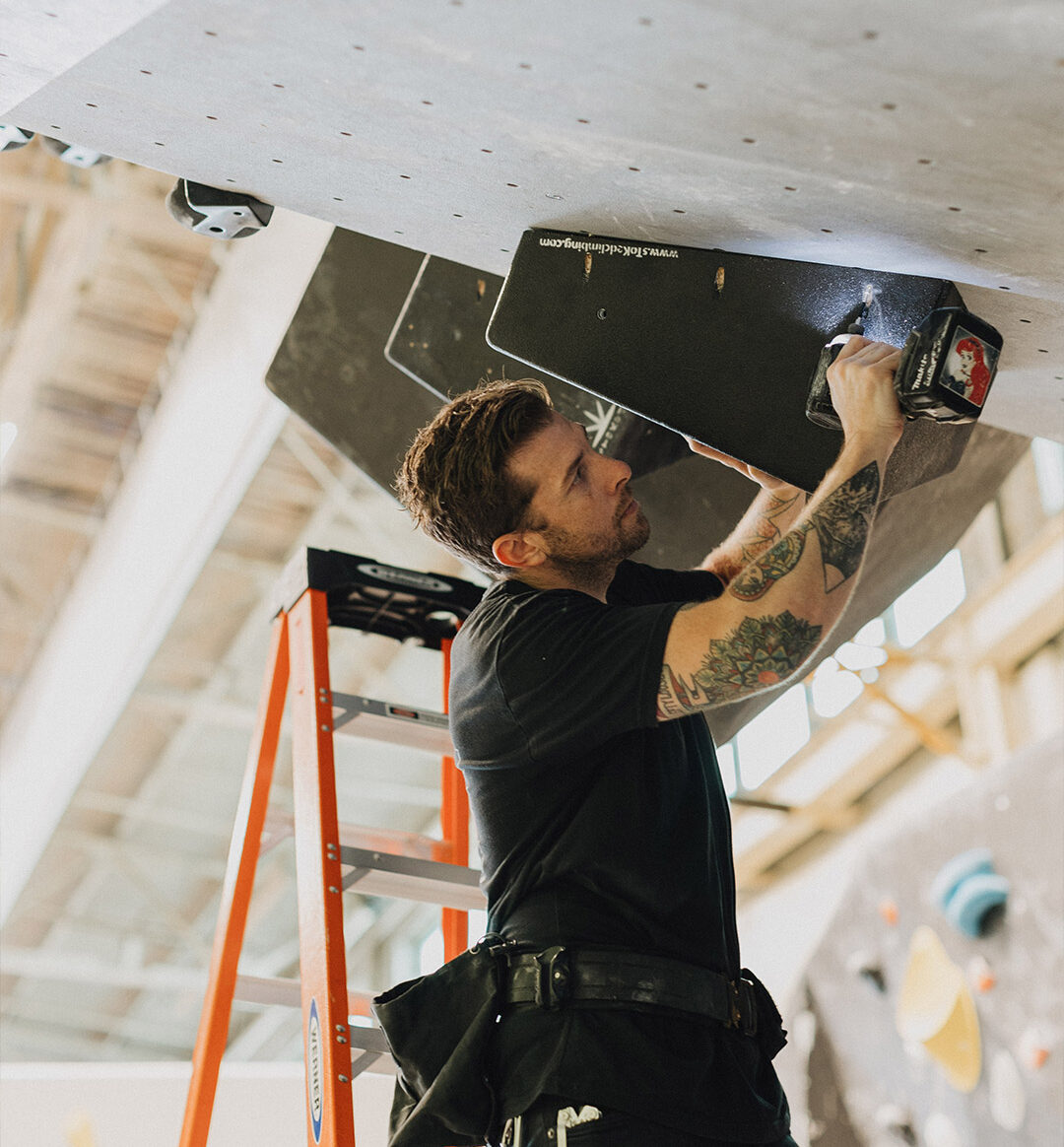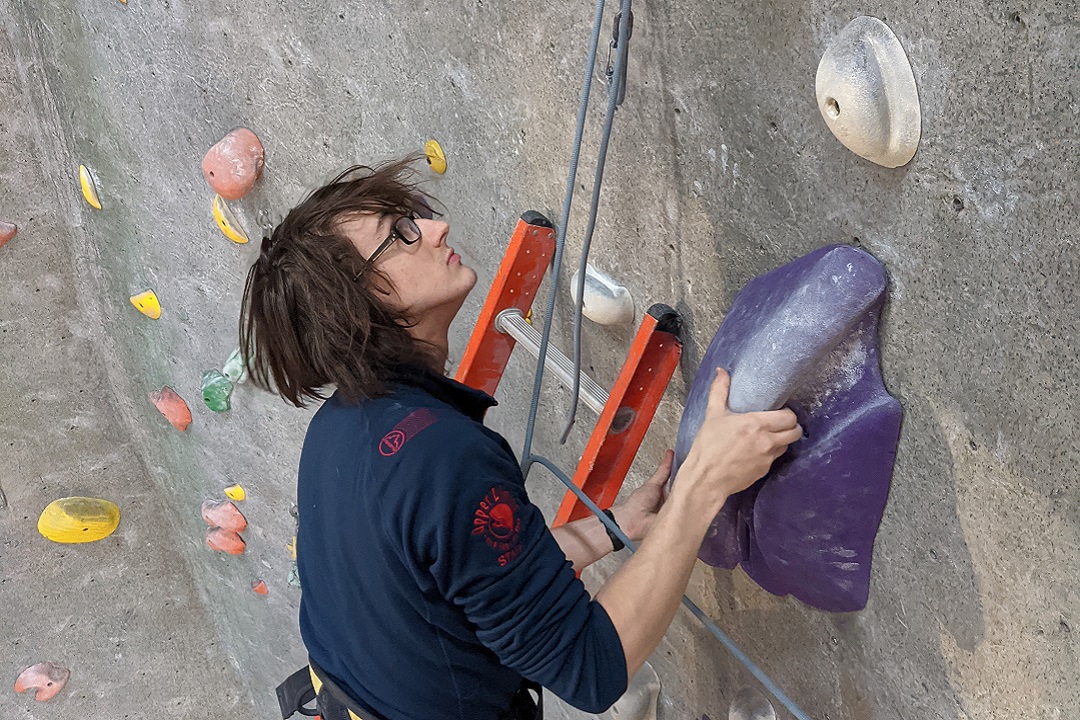During Miles West’s first time at a climbing gym, around 2013 in Florida, he overheard a conversation among route setters that reminded him of his discussions with members of his rock band.
“When you set a climb, sure, it’s kind of your idea, but when you’re working on a healthy route setting team, it’s ultimately a compromise,” explained West, director of route setting at Climb So iLL, a local company with gyms in downtown St. Louis and St. Charles. “Sometimes, that means giving and receiving criticism, the same as with a band.”
As the sport of climbing grows — it made its Olympics debut last year — the competition among gyms has increased as well, and people in the industry say that one of the main ways a venue can distinguish itself is through the consideration put into its routes.
Route setting is “like the food at a restaurant,” said David Chancellor, owner and sales director of Climb So iLL. “You can get everything else right. You can have the nicest facility, the best menu, great service, but if you don’t get that final product right,” customers aren’t happy.
Recipe for Success
Route setting involves deciding which holds to use, in which pattern, on which surface and then installing those pieces. In developing a design, considerations include how challenging to make a particular route and how to make it unique from others. Route setters must also determine the grade of a route, meaning its difficulty, and then label it as such.
Yishai Steineger, the head route setter at Upper Limits Indoor Rock Climbing Gym, started to climb regularly and work at the local company in 2019, when he was 18 years old.
“I kind of got really good at it really quickly,” he said.
He soon started coaching — first less experienced climbers and then the Upper Limits Elite Team, which motivated him to “set hard things and interesting things” to help the climbers do well in competitions, he said.
In September 2021, he became head route setter for the company, which has gyms in downtown St. Louis, Chesterfield, and Maryland Heights, as well as in Bloomington, Illinois.
In setting, Steineger says his goal is to offer a diversity of options in terms of difficulty, “so that everyone in the gym is happy.” He also tries to focus on an objective, such as teaching climbers how to perform a heel or toe hook.
Stripping old routes from a wall takes about 15 to 20 minutes. The most time-consuming part is setting the new holds, says Steineger, which can take a few hours or a couple days, depending on the size and angle of a wall and the setters’ experience.
When Steineger was first setting, he wore a harness and was attached to a rope.
“If you’re setting on a rope, on a steep terrain, it takes a lot of effort to pull your body up towards the wall,” he said. “It’s a very exhausting process.”
The other option is using a ladder, which is less tiring but more dangerous. Steineger will sometimes be standing 35 feet in the air.
“It saves a ton of energy but is terrifying,” he said.
Steineger is willing to deal with the risk and wear on his body because he likes envisioning problems and possible solutions for routes and then watching climbers try to solve the challenges.
“I really like relating to [Upper Limits] members in that way,” he said. “It’s a unifying experience.”
Tireless Work Ethic
Like Steineger, West also started to work in climbing around the same time he became acquainted with the sport. He asked the head route setter of the Florida gym how he could get the same job.

Miles West, director of route setting at Climb So iLL.
“He told me in a very nice way, ‘You have to be a better climber,’” West recalled. “I worked tirelessly at my climbing, tried to understand the movement, not just whether I can or can’t do a move, but why they work or don’t work and what’s holding me back mechanically.”
Both Steineger and West emphasized the importance of listening to feedback from customers.
“There are some incredible climbs out there, when you’re climbing outside, that some people just don’t like for whatever reason, and that doesn’t make it a bad climb. It just makes it a climb that person doesn’t connect with,” said West, who has also worked at gyms in Texas and Tennessee and at national competitions. “Once I recognized that fact, I was more OK with people not liking my climbs, but also it drove me to attempt to set as many styles as possible, because I wanted everyone to have a positive experience.”
Feedback and Fulfillment
Parisa Dashti, a 29-year-old manufacturing engineer, spends about four days each week at the Climb So iLL gyms and sees several elements as important to route setting, including ensuring that there are options for people of different heights; making sure the grading of routes is representative of the actual difficulty (otherwise it can be demotivating); and leaving routes up long enough for climbers to have a chance to solve them, she said.
The Climb So iLL routes setters do a good job, Dashti said, and “don’t set the grade for new routes until they’ve had a chance to see people climb and provide feedback.”
Like Steineger, West, 35, also has a passion for route setting — and an awareness of the toll it takes on your body. He said he wishes he had discovered climbing sooner because he doesn’t think he will be able to spend each day working on the walls beyond age 40.
He envisions moving into a mentorship role and helping younger climbers, the way the route setter at the Florida gym helped him. As he put it, “It very much is a craft passed down from one setter to another.”
Author: Eric Berger is a regular contributor to Terrain Magazine.
Top Image: Yishai Steineger, head route setter at Upper Limits Rock Climbing Gym.


Leave A Comment